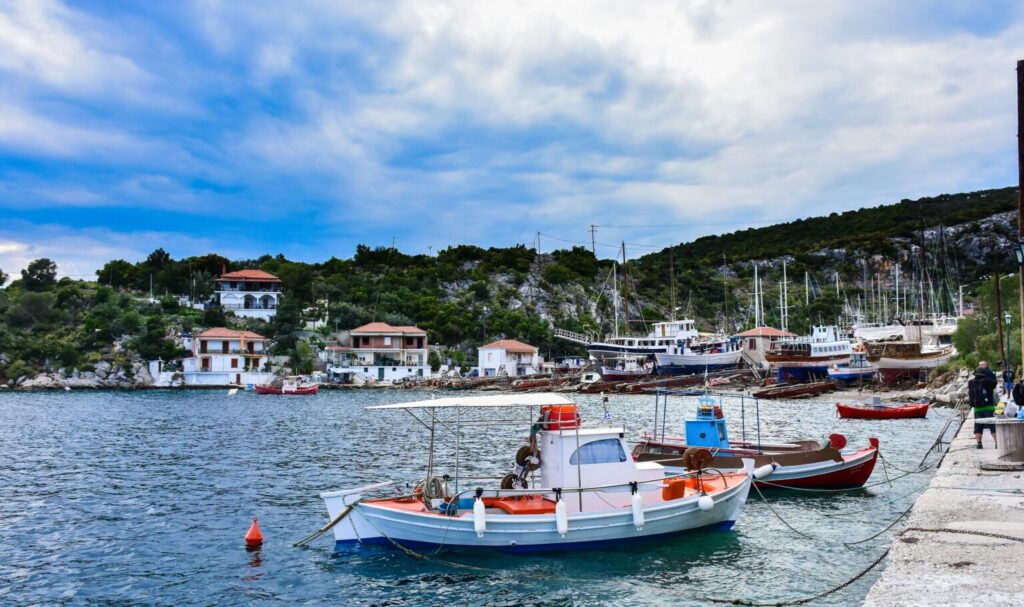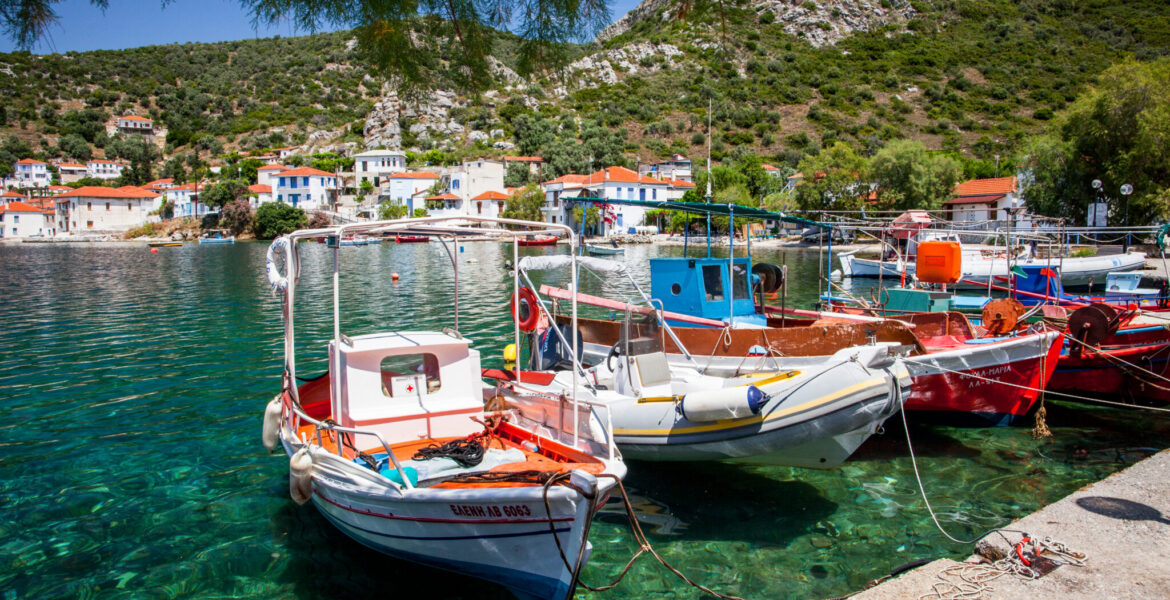The hidden beauty of the Pagasetic Gulf is only a breath away from Pelion.
The green and picturesque Pelion may overshadow the beauty of the Pagasetic Gulf, but more is needed to deter travellers from discovering the islet retreats, with Paleo Trikeri being the first and best.
The Pagasetic Gulf covers an area exceeding 175 square kilometres between the coasts of Thessaly and the Pelion peninsula, while the emerald diamond in its crown is the historic Old Trikeri.
Old Trikeri

Although known as a place of exile and displacement of left-wing women of all ages during the darkest periods of modern Greek history, Paleo Trikeri is a green little island with unspoiled nature, a long history, and a strong local culture.
It has largely escaped the attention of mass tourism, which is by no means a bad thing because it has helped this small settlement keep its rare and unique identity.
Although no one can ascertain the number of permanent residents of the island, which is at most 40-45 people, you will find absolute peace and tranquillity here. Away from the hustle and bustle, you will find a green strip of land bathed in sunny blue.
Here, expect something other than five-star hotel amenities. A few guest houses and a few fish taverns are the modest luxuries that the only inhabited island of the Pagasetic Gulf can offer you without, however, forgetting the fantastic view that combines the blue of the Aegean with the green of Pelion and Evia being faintly visible in the background.

Of course, you will enjoy these views from the monastery of Evangelistria, which is located at the top of the hill at the highest point of the small island.
To reach Paleo Trikeri, you must take a coastal route of about 85 kilometres from Volos in the direction of Alogoporos. From there, small boats will take you to the hidden paradise that famous personalities kept as a sealed secret.
It is even said that Greta Garbo, back in the 1960s, often visited the Old Trikeri with friends to enjoy the absolute peace and quiet that this place offered in a time when electricity was an unknown word for the small island.
Alata

Leaving Paleo Trikeri and a little further east, you will find Alata. Although today completely uninhabited, Alata or Galatea – as it is known in the local dialect – is the second islet of the Pagasetic Gulf, very close to the southwestern coast of Magnesia.
As its name suggests, the long, narrow island takes its name from the salt flats on the opposite coast, while wild olive groves cover a large part of the island.
Historically, the islet played an important role in the Greek War of Independence, when the disorderly Greek forces defeated the Ottomans, securing control of the islet and, at the same time, the first borders of Greece.
Although the islet is completely uninhabited today, it is interesting that until 2001, it was inhabited by monks of the Monastery of Agios Saranda on the island.
Kikinthos

On the other side of the gulf, almost forgotten, stands the also uninhabited Kikinthos. The small island, also known as Agios Nikolaos from the small church of the same name, appears on several modern-era maps.
According to most archaeological finds, it served as a place of quarantine.
Today, although uninhabited, it has been classified as an archaeological site, and you can reach it by boat at the church of Agios Nikolaos.
Yianni Koutroudi is a columnist for Travel. Translated by Paul Antonopoulos.
READ MORE: One bakery, one century: A culinary landmark in Leonidio.

